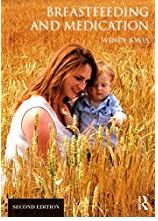Pdf https://breastfeeding-and-medication.co.uk/wp-content/uploads/2024/06/vaginal-thrush-and-bf.pdf
Most women have suffered the intense itching associated with vaginal thrush. It can also cause a white vaginal discharge (often described as like cottage cheese), which does not usually smell. It can also sting when you pass urine or have sex. It is a fungal infection but can occur after antibiotics, during hot weather or after wearing tight jeans regularly. It can also be caught from your partner during intercourse particularly if this has been maybe rapid or over enthusiastic. As an undergraduate I had this described as “honeymoon disease” but that was maybe in a different era!
It is not harmful but can be very uncomfortable. Some people experience symptoms more frequently than others.
Treatment:
Many treatments can be purchased over the counter rather than needing a GP appointment. The leaflets may say “ ask your GP or pharmacist if you are breastfeeding” which relates to licensing application rather than risk
- Vaginal creams and pessaries containing clotrimazole (Canesten™)
- External creams eg clotrimazole (Canesten™), Vagisil™
- Single dose antifungal medication containing fluconazole (Canesten Once™, Diflucan™, Own brands
- Combinations of internal and external creams, oral tablet and cream
Your partner can be treated with clotrimazole cream applied to the penis and extra lubrication during sex may help.
One natural remedy often recommended is to apply live, natural yoghurt on a tampon to restore natural flora and to eat live yoghurt/ take probiotics. Cotton pants, loose clothing and even going commando helps. Do not try to be over enthusiastic about wiping after going to the loo and try not to scratch as this will further damage the skin. Symptoms should resolve within a week
